Do you know how often to change baby diaper? Change your baby’s diaper every 2–3 hours and immediately after they poo. Nighttime can extend up to a full sleep cycle if not soiled.
Caring for a newborn includes mastering the frequency of diaper changes to ensure your baby’s comfort and health. Infants typically need their diapers changed promptly, as their delicate skin can quickly develop rashes from moisture. Parents become attuned to their baby’s patterns, recognizing that a dry, clean diaper is crucial for a happy, rash-free baby.
Keeping them dry is not just a matter of comfort but also prevents infections caused by bacterial growth in moist environments. As babies grow, their need for frequent changes decreases slightly, but vigilance is always key. Remember, a snug-fit diaper that’s checked regularly makes for a contented child and a confident parent, making the art of timely diaper changes essential to nurturing your little one.
Introduction To Diapering: Understanding The Basics
Navigating the world of diapering starts with a fundamental rule: change the baby’s diaper frequently. Mastering timely changes ensures your infant stays clean and comfortable, averting potential skin issues.
Welcome to the world of diapering, a crucial part of baby care that ensures your little one stays clean and comfortable. As a new parent, mastering the art of diapering is essential. It can seem daunting, but with the right knowledge, you’ll be a pro in no time. In this section, we’ll cover the importance of maintaining good diaper hygiene and the differences between cloth and disposable diapers. Let’s dive into the basics of keeping your baby dry and happy.
The Importance Of Diaper Hygiene
Good diaper hygiene is critical to preventing the spread of bacteria and avoiding diaper rash. A wet or soiled diaper can lead to discomfort and health issues for your baby. Here’s what you need to know:
- Regular changes are necessary to keep your baby’s skin healthy.
- Clean the diaper area gently with each change to prevent irritation.
- Use barrier creams to protect against moisture and rash.
- Watch for signs of sensitivity to certain diaper brands or wipes.
Overview Of Diaper Types: Cloth Vs. Disposable
Parents often debate whether to use cloth or disposable diapers. Each type has its own benefits and considerations. Here’s a quick overview:
| Type | Pros | Cons |
| Cloth Diapers | Eco-friendly and cost-effective in the long runReusable | Requires washing Less absorbentNeeds a snug fit |
| Disposable Diapers | Highly absorbentConvenient for travel, Single-use | More expensive over time Environmental impact potential for allergies |
Newborn Diapering: A Special Case
For parents, newborn diapering is a journey of constant learning. Newborn babies have delicate skin and special needs. Therefore, understanding diaper changing routines for newborns is crucial for their comfort and health.
Frequency Of Diaper Changes For Newborns
Newborns typically need frequent diaper changes. Expect 8-12 diapers a day in the first few weeks. This ensures that your baby’s sensitive skin remains dry and prevents diaper rash.
| Age | Diapers per Day |
| First week | Up to 12 |
| 1-4 weeks | 8-12 |
| 1-3 months | 6-8 |

Active bowel movements and frequent feedings result in more diaper changes. Keep tracking the number to judge your baby’s hydration and digestion.
Recognizing The Need For A Change: Signs To Watch For
- Discomfort: Fussiness or crying may signal a wet diaper.
- Smell: A noticeable odor suggests it’s time for a change.
- Bulge: A diaper looking fuller or rounder means it’s likely wet.
- Weight: A heavy diaper indicates wetness.
- Color-change: Some diapers have a wetness indicator line that changes color.
Regular checks every two hours can help. But look out for the signs above to keep your newborn comfortable. A quick response to these signs protects your baby’s skin.
Growth Phases: Changing Needs
Welcome to the journey of parenthood where the needs evolve as quick as a baby’s growth. Diaper changes are frequent events in a parent’s life. Understanding a baby’s growth phases is key. Let’s dive into how diapering needs shift as babies hit new milestones.
How Diapering Needs Change As Your Baby Grows
Babies grow up fast and so do their diaper needs. Newborns need many diaper changes. They may need a change after every feeding. As babies grow, the number of diapers used each day will decrease. Here’s an easy guide:
Using a table to display changes
| Age | Diaper Changes Per Day |
| Newborn | 8-12 times |
| 1-5 months | 8-10 times |
| 5-9 months | 6-8 times |
| 9-12 months | 6-8 times |
Adjusting To Your Baby’s Evolving Schedule
As babies grow, their eating and sleeping patterns change. Consequently, their diapering routine adjusts too. Here’s how parents can keep up:
- Track patterns – Keep notes on your baby’s habits to predict diaper changes.
- Increased mobility – Older babies move more, may need hard-wearing diapers.
- Solid foods – Once introduced, may change diaper change frequency.
- Sleep schedule – Longer sleep might mean fewer changes.
- Activity level – Active babies might need more absorbent options.
Remember, every child is unique. Stay attuned to your little one’s signals. Patterns will guide you to a suitable diapering schedule.
Diapering Through The Night: Strategies For Sleep
Parents know that a dry diaper means a happy baby and more sleep for everyone. But night-time diapering has its own rules. Let’s explore them!
Balancing Sleep With Diaper Changes
Getting a full night’s rest is crucial for both you and your little one. Keeping that in mind, you should aim for a balance:
- Choose absorbent diapers designed for long hours.
- Limit liquids before bedtime to reduce wetness.
- Prepare for a change only when necessary.
- Set up a quiet changing space to keep the baby calm.
When To Change Your Baby’s Diaper Overnight
It’s essential to know when a diaper needs changing during the night. Look for these cues:
| Diaper Status | Action |
| Heavy or sagging | Change immediately. |
| Soiled | Change to avoid irritation. |
| Only mildly wet | Consider waiting until morning. |
| Baby is awake and fussy | Gentle change may soothe back to sleep. |
Remember, every baby is different. Pay attention to their needs and patterns. With the right approach, both you and your baby can enjoy uninterrupted rest!
Understanding Baby’s Diet And Diaper Changes
As your baby grows, their diet changes. This affects how often you’ll change their diaper. It’s not just about the number of diapers. What’s in the diaper also changes. Let’s dive into how diet plays a role in your baby’s diaper routine.
The Impact Of Feeding On Diaper Change Frequency
The type of milk your baby drinks matters. Breast milk and formula pass through a baby’s system at different speeds. Breastfed babies may need more frequent changes. Their stools tend to be softer and more frequent.
Formula-fed babies might have fewer diaper changes. Their waste is often firmer and less frequent. This leads to a different diaper-changing schedule.
- Breastfed babies: Often have more frequent, watery stools.
- Formula-fed babies: Generally experience firmer stools, fewer times a day.
Solid Foods And Diaper Change Dynamics
When solid foods enter the mix, expect changes. Around six months, babies start on solids. Diaper content starts to thicken. This might mean fewer diaper changes compared to the newborn stage.
| Age | Food Type | Expected Diaper Changes |
| 0-6 months | Milk (Breastmilk/Formula) | Frequent, softer stools |
| 6+ months | Introduction to solids | Less frequent, firmer stools |

New textures and ingredients affect how a baby’s digestive system works. This introduces a new diaper-changing rhythm for parents.
- Introduce new foods slowly. Notice how each affects diaper habits.
- Stay attentive to your baby’s digestion and comfort.
- Expect potential increase in diaper rash with new foods.
Health considerations are vital when deciding how often to change a baby’s diaper. A timely change can prevent health issues. Understanding the impacts of diaper use on a baby’s skin is crucial.
Diaper Rash: Prevention And Impact On Changing Frequency
Diaper rash is a common concern for parents. Red, irritated skin can make a baby uncomfortable. Regular diaper changes can help prevent this pain.
Key prevention tips include:
- Keeping skin dry: Moisture breeds bacteria and yeast.
- Clean skin gently: Avoid rubbing which can damage sensitive skin.
- Barrier creams: Protects against moisture-related rashes.
Consider these factors and check diapers every two to three hours to lessen rash chances.
Illness And Increased Diaper Changes
When babies fall ill, diaper changes may become more frequent. Diarrhea and other symptoms can soil diapers quickly. This means parents need to be extra vigilant.
| Illness | Diaper Change Frequency |
| Diarrhea | After each bowel movement |
| Cold | May remain the same or increase |
Cleanliness is key during sickness to prevent further irritation or infection. This calls for swift actions following each dirty diaper.
Time-saving Tips For Efficient Diaper Changes
Effective diaper changes can turn a messy task into a swift, streamlined process. Parents often search for ways to simplify the diapering routine, saving precious minutes and reducing hassle. Our array of time-saving tips will revamp your approach to diaper changes, transforming them into a quick and effortless part of your day.
Organizing Your Diaper Changing Station
A well-organized diaper changing station is key to speedy diaper swaps. Here’s how to set up yours:
- Keep supplies within reach – Stack diapers, wipes, and creams close at hand.
- Use caddies or baskets – Contain smaller items to avoid messes and scrambling.
- Maintain stock levels – Regularly check and replenish supplies to prevent last-minute runs.
Consider a visual checklist near the station. It ensures you never miss an item during restocking.
Quick And Effective Diaper-Changing Techniques
Mastering swift diaper changes comes down to technique. Here are steps to expedite the process:
- Ready the new diaper by placing it open under your baby before removing the old one.
- Clean efficiently – Use wipes thoroughly, folding to utilize clean surfaces for maximum effect.
- Fasten securely – Ensure the diaper is snug, but comfortable; practice makes perfect.
Keep distractions, like a toy or mobile, at the changing station to keep your baby engaged and still. This single tip can cut down on fuss and wriggling, making changes far swifter.
Monitoring Diaper Changes For Health Insights
Keeping track of baby diaper changes offers a window into your infant’s well-being. How often to change a baby diaper is not just about comfort, it’s important for monitoring health. Diaper change frequency can reveal hydration levels, digestion patterns, and potential concerns. Parents gain insights by noting changes in diaper habits. This includes wetness, stool consistency, and frequency.
The Relationship Between Diaper Habits And Baby’s Health
What’s found in a diaper tells a story. It’s crucial to understand this relationship:
- Wet diapers indicate hydration status.
- Stool color and texture reflect digestion and diet.
- Irregularities can signal health issues.
Regular changes help to prevent rash and irritation. Keep an eye on diaper contents, as they often alert to health changes.
Keeping A Diaper Change Log: When And Why It Helps
Maintaining a diaper change log assists in recognizing patterns:
| Time | Diaper Condition | Notes |
| Morning | Wet | Normal hydration |
| Afternoon | Soiled | Check for color, texture |
| Evening | Wet and soiled | Possible feeding reactions |
Logging helps:
- Track hydration and digestive health.
- Identify reactions to new foods.
- Catch early signs of infections or allergies.
Remember to update the log with detailed observations. This proves invaluable during pediatrician visits for a health checkup.
The Role Of Diapers In Potty Training
Diapers serve as a transition tool for toddlers, playing a key role in potty training. They provide a sense of comfort and security during the early stages. Understanding when and how to shift away from diapers is crucial. Proper diaper change routines can facilitate this major milestone in a child’s development.
Recognizing Readiness For Potty Training
Each child shows unique signs of readiness for potty training. Several indicators suggest a toddler may be ready to begin the transition process.
- Stay dry for longer periods: A clear signal is when a toddler stays dry for two hours or more.
- Regular bowel movements: Predictability in bowel movements suggests control over bladder and bowel functions.
- Discomfort in wet diapers: Toddlers ready for potty training might express discomfort in soiled diapers.
- Increased interest in bathroom habits: Curiosity about the bathroom habits of others can also be a readiness sign.
Transitioning From Diapers To Potty: How Change Frequency Diminishes
As children learn to use the potty, the frequency of diaper changes typically decreases. This transition phase involves a gradual reduction as follows:
| Stage | Diaper Use | Change Frequency |
| 1. Beginning | Regular | Same as before training |
| 2. Middle | Mix of diapers/potty | Less than before |
| 3. Proficient | Occasional/Nighttime | Rarely; only as needed |
Moving from diapers to potty begins with the introduction of toilet routines. It progresses to less reliance on diapers during daytime. Eventually, diapers may only be necessary during naps or overnight. This phase signals growing independence and a key achievement in a toddler’s life.
Disposable Diapers And The Environment
Thinking about disposable diapers and the environment raises important questions. New parents often wonder about the balance between convenience and ecological responsibility. Disposable diapers, though handy, may have a significant environmental footprint. Here’s a closer discussion on the matter.
Environmental Impact Of Disposable Diapers
Disposable diapers pile up in landfills and contribute to environmental pollution. They take approximately 500 years to decompose. Each year, millions of tons of diaper waste add to mounting environmental concerns. Consider these facts:
- Non-biodegradable materials take centuries to break down.
- Manufacturing disposable diapers consumes energy and resources.
- The waste contributes to toxic pollution in the earth’s soil and water.
Eco-friendly Alternatives And Reducing Frequency Of Changes
Eco-friendly diaper options off a gentler touch on our planet. Some parents switch to cloth diapers. They are reusable and cut down on waste. Here’s how parents can reduce the frequency of diaper changes without sacrificing comfort or hygiene:
- Opt for high-quality diapers that offer better absorbency.
- Change diapers only when they are fully used.
- Consider biodegradable diaper brands that minimize environmental damage.
- Use diaper inserts for longer periods of time between changes.
Adopting these practices means a smaller carbon footprint and a happier, healthier planet for future generations to thrive on.

Dealing With Diaper Leaks And Blowouts
Welcome to the messy yet inevitable part of parenting—diaper leaks and blowouts. Even the most experienced parents face these challenges. Acting fast can save you time and prevent the mess from spreading. Understanding the reasons and applying effective strategies will reduce the frequency of these events.
Common Causes Of Diaper Leaks
Diaper size and fit are crucial to preventing leaks. A poorly fitted diaper allows liquids to escape. The incorrect size could either be too tight or too loose.
A baby’s sleeping position can contribute to leaks. Those sleeping on their sides or stomach might experience more leaks in those positions.
Oversaturation is another common cause. Prolonged wear without checks can lead to leaks.
Strategies To Prevent Frequent Clothing And Diaper Changes
Prevention is better than clean-up. Implementing strategies can save you from constant changing.
- Right-size diapers: Make sure you’re using the correct diaper size for your baby’s weight and shape. Regularly check and adjust as your baby grows.
- Proper diaper fit: Ensure the diaper fits snugly around the waist and thighs to prevent gaps.
- Change frequency: Check and change diapers every two to three hours, or immediately after a major soiling.
For overnight protection, consider:
- Using overnight diapers – more absorbent and designed to last the night.
- Trying diaper booster pads for added absorbency without bulk.
Remember, applying a diaper correctly goes a long way:
| Step | Action |
| 1 | Open the diaper and slide under your baby gently. |
| 2 | Ensure the back part with adhesive strips is at your baby’s waist level. |
| 3 | Pull the front up between your baby’s legs. |
| 4 | Fasten the adhesive strips so they’re snug but not tight. |
Master these strategies, and you’ll tackle diaper leaks and blowouts like a pro!
Conclusion: Tailoring Diaper Change Frequency To Your Baby
Now you’re about to wrap up your journey on finding the perfect diaper change schedule for your little one. Tailoring diaper change frequency to your baby is a dance of attentiveness and understanding their unique rhythms and cues.
Recognising Your Baby’s Unique Needs
No two babies are the same, and neither are their diaper needs. Some infants may require more frequent changes, while others have less sensitive skin. Observing your baby’s habits is crucial to developing a routine that works for them. Look out for signs of discomfort or the presence of a wet or soiled diaper.
- Wetness indicators on diapers can simplify this task.
- Keep track of diaper changes and baby’s reactions to understand patterns.
- Consult pediatricians if you notice any skin issues or irregularities.
Adapting Diaper Routines For Health And Comfort
Adapting to your baby’s needs ensures they stay comfortable and healthy. A good diaper routine does more than keep your baby dry; it prevents rashes and skin infections.
| Diaper Change Frequency | Considerations |
| Newborns | Every 2-3 hours or when soiled. |
| Older Babies | Depending on diaper type, every 3-4 hours. |
| Nighttime | Less frequent; consider higher absorbency diapers. |
Tweaking routines based on growth, diet changes, and activity levels is vital. Stay flexible and attentive to ensure your baby’s diapering needs are always met with care.
By recognizing your baby’s needs and adapting diaper routines, they will experience optimum comfort and health. Tailor your diaper-changing schedule to fit your baby’s unique skin type, activity, and life stage. Always remember that every child is different, and so is their path to a happy, healthy bottom.
Frequently Asked Questions For How Often To Change Baby Diaper
How Often Should Newborns Get A Diaper Change?
Newborns typically require a diaper change every 2 to 3 hours. However, it’s important to check frequently for wetness or stool to prevent diaper rash and discomfort. Nighttime changes can be less frequent if the diaper is highly absorbent and the baby is not disturbed.
What Are Signs A Diaper Needs Changing?
Signs that indicate a diaper change include heaviness, sagging, or a noticeable smell. Discomfort or crying from the baby can also signal it’s time for a fresh diaper. Always check diapers regularly to ensure your baby remains clean and comfortable.
Can Skipping Diaper Changes Harm My Baby?
Yes, infrequent diaper changes can lead to diaper rash, bacterial infections, and general discomfort for your baby. It’s essential to maintain regular changes to promote hygiene and prevent potential health issues.
Is It Necessary To Change A Diaper After Every Pee?
While it’s not necessary to change a diaper after every pee, doing so can help prevent irritation. A good rule is to check the diaper every 2 hours and change it if it’s wet or soiled to keep your baby’s skin healthy.
Conclusion
Keeping your baby comfortable and rash-free is a top priority. Changing diapers often is key—usually every 2-3 hours, but immediately after soiling. Stay vigilant for cues and maintain a regular schedule. Remember, a dry baby is a happy baby, and a happy baby means happy parents. Stay attentive, keep stocked up on diapers, and embrace the joy of your growing little one.
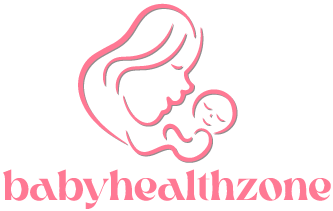
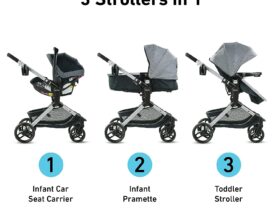
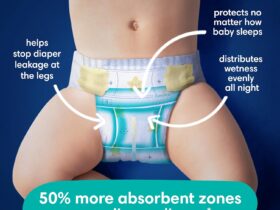



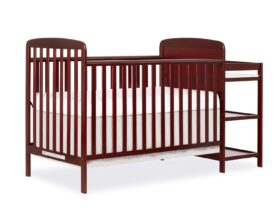
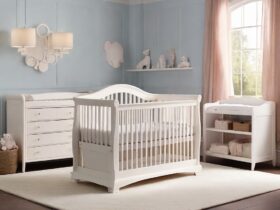
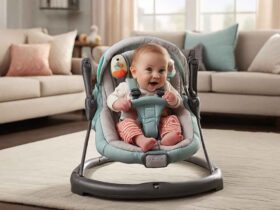

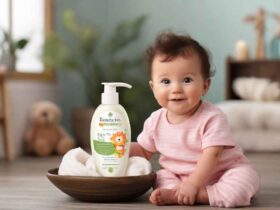
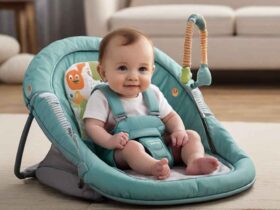
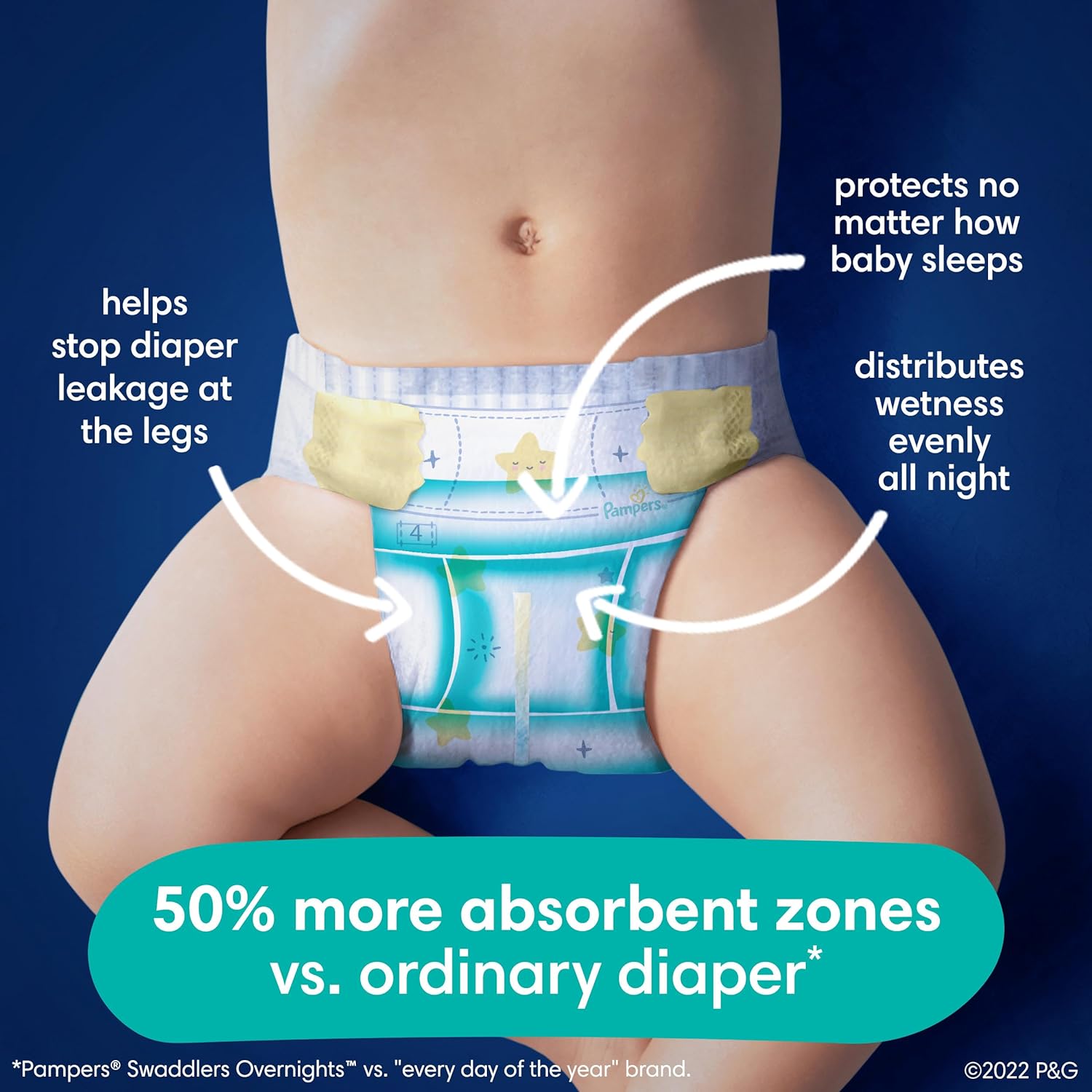

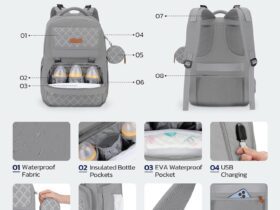
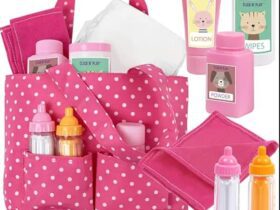
Leave a Review